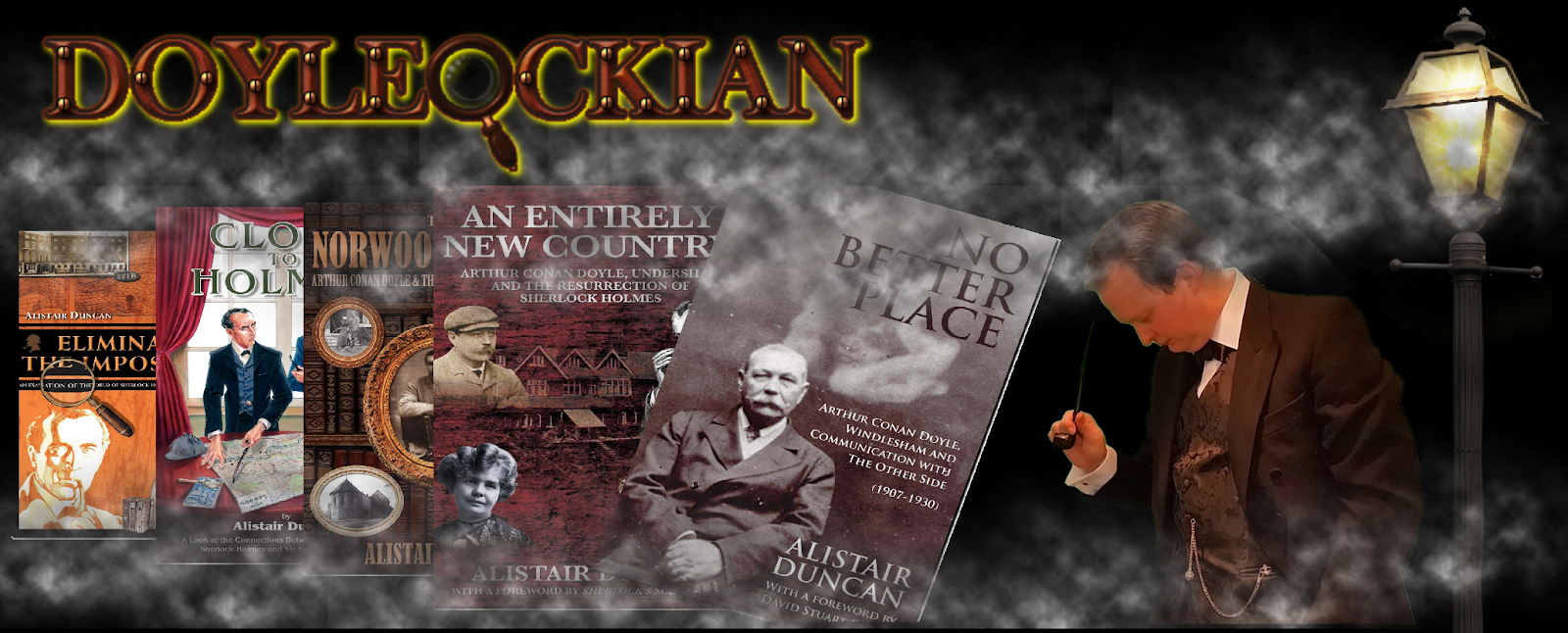Book review - England's Secret Weapon
Note: This is the book that pipped me (with Close to Holmes) and others to the 2010 Sherlock Holmes Society of London - Tony & Freda Howlett Award. Rest assured however that I shall remain objective :-)
The author Amanda Field presents the reader with a truly exhaustive study of the 20th Century Fox and Universal Studios Holmes films that featured Basil Rathbone and Nigel Bruce. Before I launch into my review I think it is important to manage expectations.
I have looked at some Amazon reviews of this book which have been decidedly unkind. For the most part they are written by people who bought the book expecting it to be full of witty anecdotes and trivia about the Rathbone/Bruce films. When they have found this not to be the case they have damned the book.
So, to be clear, this is NOT such a book. There remains a space in the market for someone to produce a more light-hearted book on these films but to criticise Field's book for not being in this style is not fair.
Field's book is a film study and concerns itself with the style of the films and the way they depicted changing attitudes in society and how they in turn were affected by them.
While she does address all of the films, Field focuses largely on those produced by Universal Studios (the latter 12 of the 14 Rathbone pictures). She breaks these down into three groups and proceeds to analyse each of them within the context of that group.
The first group were the films that were evidently rooted in their time. These were the overt war films such as "The Voice of Terror" where Nazis featured and Holmes was very much fighting for the allies.
The second group are the chronologically ambiguous films which were deliberately devoid of too many specific temporal references. Amongst these were such films as "The Scarlet Claw" and "The House of Fear".
The final group consisted of the horror films. These often shifted between time periods with Baker Street remaining firmly Victorian but the rest of the world being very much mid-twentieth century. However these films (examples being "The Woman in Green" and "Dressed to Kill") featured glamorous and dangerous female villains and monstrous forms of death such as venomous spiders and deformed giants that broke their victims backs.
Field analyses these films by looking at everything from sets, costumes and publicity materials and explains how they were all adjusted in line with the impression the films were desired to give and the audience they wished to attract.
Light reading it is not but it is the ultimate resource for those wishing to understand the thinking behind these iconic films.
The author Amanda Field presents the reader with a truly exhaustive study of the 20th Century Fox and Universal Studios Holmes films that featured Basil Rathbone and Nigel Bruce. Before I launch into my review I think it is important to manage expectations.
I have looked at some Amazon reviews of this book which have been decidedly unkind. For the most part they are written by people who bought the book expecting it to be full of witty anecdotes and trivia about the Rathbone/Bruce films. When they have found this not to be the case they have damned the book.
So, to be clear, this is NOT such a book. There remains a space in the market for someone to produce a more light-hearted book on these films but to criticise Field's book for not being in this style is not fair.
Field's book is a film study and concerns itself with the style of the films and the way they depicted changing attitudes in society and how they in turn were affected by them.
While she does address all of the films, Field focuses largely on those produced by Universal Studios (the latter 12 of the 14 Rathbone pictures). She breaks these down into three groups and proceeds to analyse each of them within the context of that group.
The first group were the films that were evidently rooted in their time. These were the overt war films such as "The Voice of Terror" where Nazis featured and Holmes was very much fighting for the allies.
The second group are the chronologically ambiguous films which were deliberately devoid of too many specific temporal references. Amongst these were such films as "The Scarlet Claw" and "The House of Fear".
The final group consisted of the horror films. These often shifted between time periods with Baker Street remaining firmly Victorian but the rest of the world being very much mid-twentieth century. However these films (examples being "The Woman in Green" and "Dressed to Kill") featured glamorous and dangerous female villains and monstrous forms of death such as venomous spiders and deformed giants that broke their victims backs.
Field analyses these films by looking at everything from sets, costumes and publicity materials and explains how they were all adjusted in line with the impression the films were desired to give and the audience they wished to attract.
Light reading it is not but it is the ultimate resource for those wishing to understand the thinking behind these iconic films.




Comments
Post a Comment